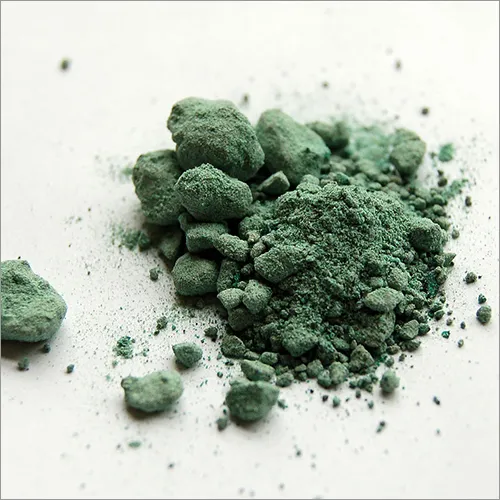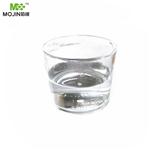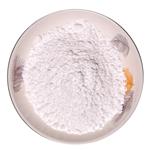Copper(I) bromide is a Pale green to green poeder that decomposes on exposure to light or moisture in air. It forms complexes with hydrochloric and hydrobromic acids and aqueous ammonia.

As catalyst for organic reactions.
It is used as effective catalyst for tetrahydropyranylation of alcohols. It can also be used in combination with palladium in catalytic synthesis of 3-haloindoles through annulation process. It is widely used in the synthesis of organic fine chemicals. The compound is widely used in the synthesis of organic compounds. It is also useful for copper-mediated coupling reactions. A silica gel support copper bromide hexa methyltriethylenetetramine complex has shown useful application for the atom transfer radical polymerization of methyl methacrylate in toluene.
Copper bromide is also known as cupric bromide, this substance was made by
double decomposition when mixing aqueous solutions of
copper sulfate and potassium bromide. This greenish blue solution was used as the bleaching step for intensifying collodion
and gelatin negatives.
It is prepared pyrometallurgically with copper metal and elemental bromine in a process similar to that for copper(I) chloride. It can also be produced by the reduction of copper(II) sulfate solutions in the presence of sodium bromide using metallic copper or sulfite as the reducing agent. Copper(I) bromide is used as a polymerization catalyst in organic reactions.
White powder or crystal. Turns green to dark blue on exposure to sunlight. Sinks and mixes slowly with water.
Cuprous bromide has weak oxidizing or reducing powers. Redox reactions can however still occur. The majority of compounds in this class are slightly soluble or insoluble in water. If soluble in water, then the solutions are usually neither strongly acidic nor strongly basic. These compounds are not water-reactive.
INHALATION: Irritation of upper respiratory tract. EYES: Irritation of conjunctivae. SKIN: Irritation, acne-like rash (usually from prolonged exposure). INGESTION: Vomiting caused by local irritant and astringent action of ionic Cu on stomach and intestines. Pain in mouth, esophagus, and stomach. Inorganic bromides produce depression, psychoses, and mental deterioration.
reagent type: catalyst
core: copper
Purify it as for cuprous iodide but using aqueous NaBr. [Keller & Wycoff Inorg Synth II 3 1946, Glemser & Sauer in Handbook of Preparative Inorganic Chemistry (Ed. Brauer) Academic Press Vol II p 1006 1965.]




